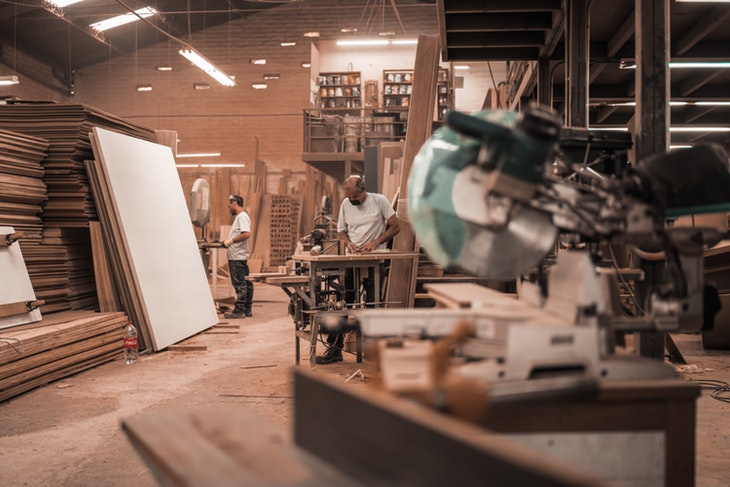
A circular saw counts among the most dangerous pieces of equipment you can use in the home. While these devices are incredibly useful, they also have the ability to inflict life-changing injury upon those who don’t take sufficient care. If you’re taking advantage of the enforced lockdown to perform a little bit of DIY, then you’ll want to take particular care to avoid a trip to your local A&E, where coronavirus will surely be rife.
With all of that said, there’s no reason to avoid using the circular saw – provided that you do so carefully. Let’s take a look at how you might get the best from this powerful piece of machinery.
Read more after the jump:

A Note on Blade Guards
Situated at the pinnacle of your saw is a defensive apparatus termed as the blade guard. Its primary function is to provide a protective layer that safeguards users from direct contact with the dangerously sharp blade. It is engineered to mitigate the risk of accidentally touching or even falling on the blade from above, reducing the chance of potential injuries.
However, it’s crucial to underscore that a blade guard is not a foolproof solution. It is merely an added feature designed to enhance user safety. It isn’t, by any means, a substitute for the implementation of basic safety procedures and caution while operating the tool. Users should still maintain constant vigilance, adhering to a high standard of safety measures, regardless of the presence of a blade guard.
These safety measures encompass the wearing of protective gear, such as gloves and goggles, adhering to safe handling practices, maintaining focus during operation, and ensuring that the device is switched off and unplugged when not in use or during blade replacements. The blade guard is there to supplement these precautionary actions, not to replace them. Misconceptions regarding its function can lead to complacency, putting users at risk. It is, therefore, indispensable to perpetually stay aware and alert.
An additional essential point to consider is the absence of a blade guard on the underside of the saw. This particular area is left unprotected to allow for the smooth, uninterrupted operation of the saw, especially when cutting through materials. Given this, it’s extremely vital to ascertain that there is an ample empty space beneath the saw.
This is to prevent any unintentional contact with the naked, sharp blade from below while the saw is in operation. It’s necessary to check that there are no objects, body parts, or surfaces directly beneath the saw that could potentially interact with the unguarded blade.
Furthermore, while using a saw, it’s also essential to control the depth of the cut, so the blade doesn’t protrude excessively on the other side of the material being cut, particularly when it is thinner.
In essence, a blade guard is a beneficial safety feature, but its presence shouldn’t lure users into a false sense of security. Adherence to fundamental safety protocols and the conscious realization of the tool’s potential risks can significantly reduce the likelihood of accidents and ensure safer usage. An effective way to utilize this tool is by striking a balance between making the most of its safety features, like the blade guard, and implementing your own personal safety measures.
How much power do I need?
The power requirement of your saw is intimately connected to the nature of the timber you aim to cut. Fundamentally, the thickness of the wood and the density of its grain directly correlate to the power required from the saw. Timber, inherently composed of thousands of minute fibres, can readily ensnare a blade that lacks the necessary potency to slice through its complex structure.
An underpowered saw is not merely less efficient; it is also prone to overheating. The motor works overtime to compensate for the lack of power, resulting in rapid heating. Continual operation in this condition can lead to irreversible damage as the motor may eventually burn out. Thus, the false economy of initially saving on an underpowered saw can lead to costly replacements and downtime in the future.
To circumvent this issue, investing in a high-wattage saw, specifically those rated 1500w or higher, is often advisable. These power-packed machines are equipped to handle diverse timber types, including those that are significantly thick and have dense grain. Over time, the benefits derived from such an investment become apparent as it typically offers improved performance and longer lifespan, effectively paying for itself.
However, power should not be the sole focus when it comes to safe and efficient saw usage. Depth control is equally important. Limiting the depth of your saw not only helps reduce the risk of blade binding but can also prevent overexposure of the blade, reducing the chance of kickbacks and other potential problems. Therefore, a judicious blend of adequate power and appropriate depth control creates the optimum conditions for effective, safe, and efficient saw operation.
What blades do I need?
The cleaner the cut you’re looking to produce, the finer the teeth of the blade will need to be. At one end of the scale is a ripping blade, which comes with great big ferocious teeth; at the other is a fine-toothed blade with ninety-six or more teeth. If you try to slice thin, delicate pieces of wood, like laminate, with a coarse blade, then it’ll be torn to pieces. On the other hand, if you try to slice a big piece of wood with a thin blade, you could easily be there for quite awhile. Select the blade that’s appropriate for the job – and make sure it’s sharp!
Do I need a guide?
If you’re looking to create super-straight cuts without stress and hassle, you’ll need a guide for the blade. This is effectively a long piece of material that restricts the lateral movement of the blade in one direction. When you come to cut, you’ll just need to line up the timber and go. Of course, a solution of this kind isn’t a substitute for a proper table-saw, but it’s a great deal cheaper, and it will allow you to achieve respectable results without spending a great deal over the odds.
What Else should I consider?
The tidiness of your workspace will help you to avoid accidents. Keep an eye on trailing cables, and clear up any loose chippings regularly. SGS Engineering provide a handy list of tips that you’ll want to keep in mind – they might save you from a nasty injury!
RELATED: How to Achieve Interior Perfection Through Some Basic DIY



